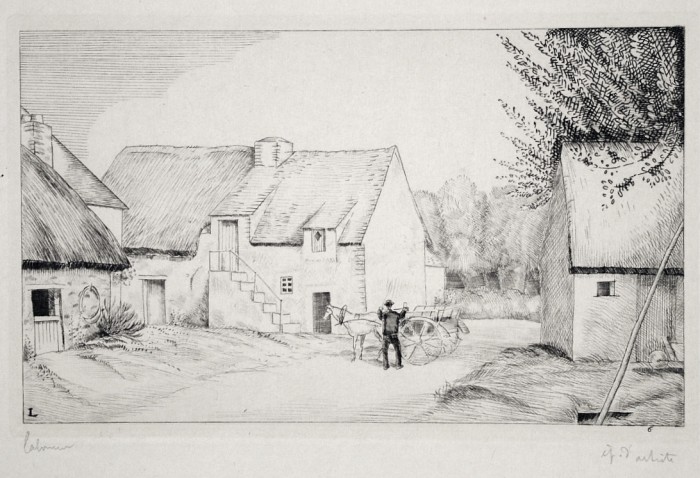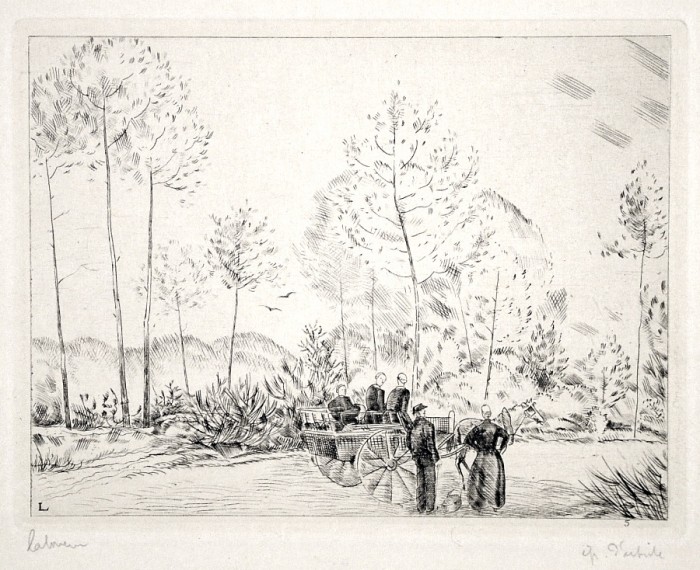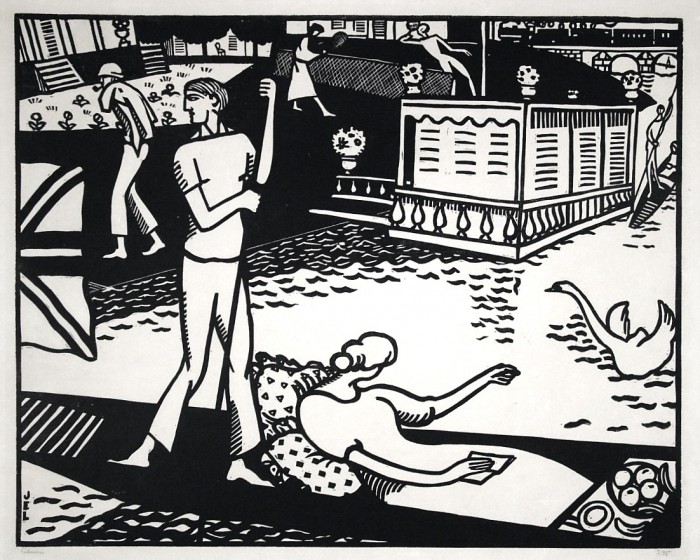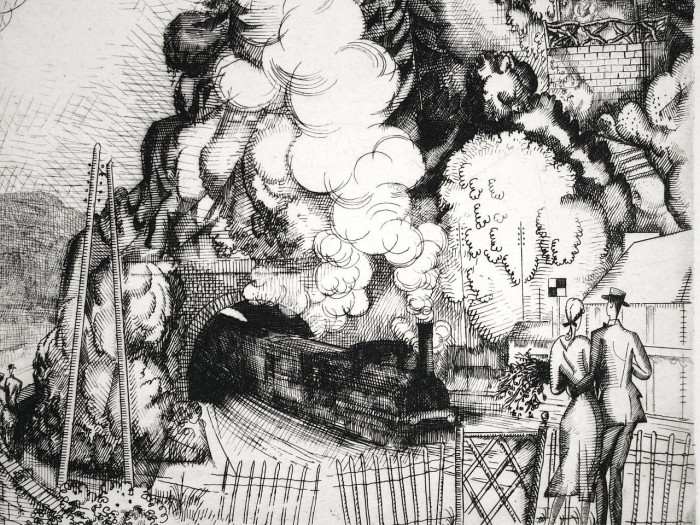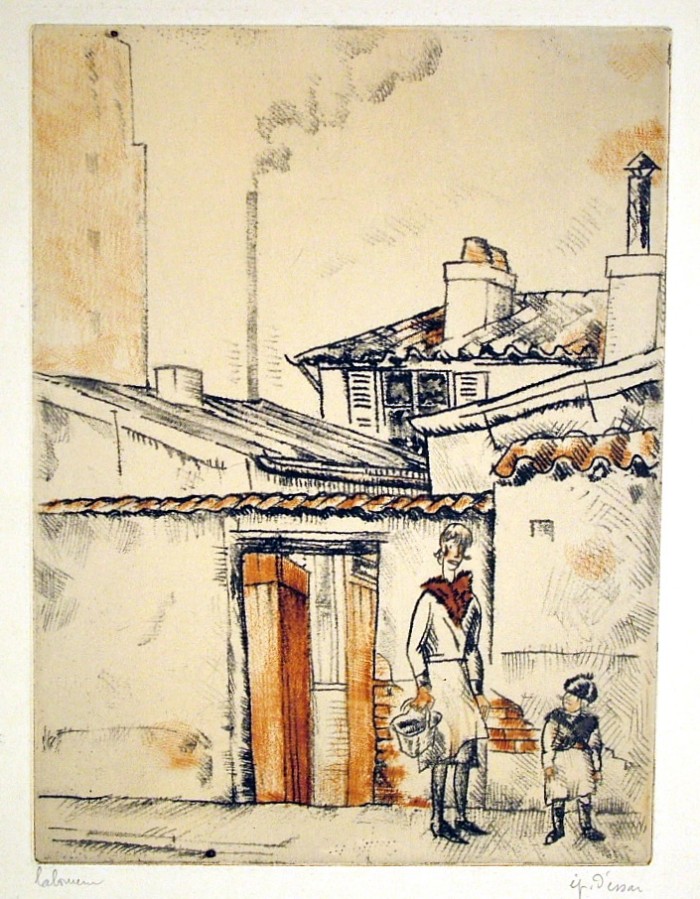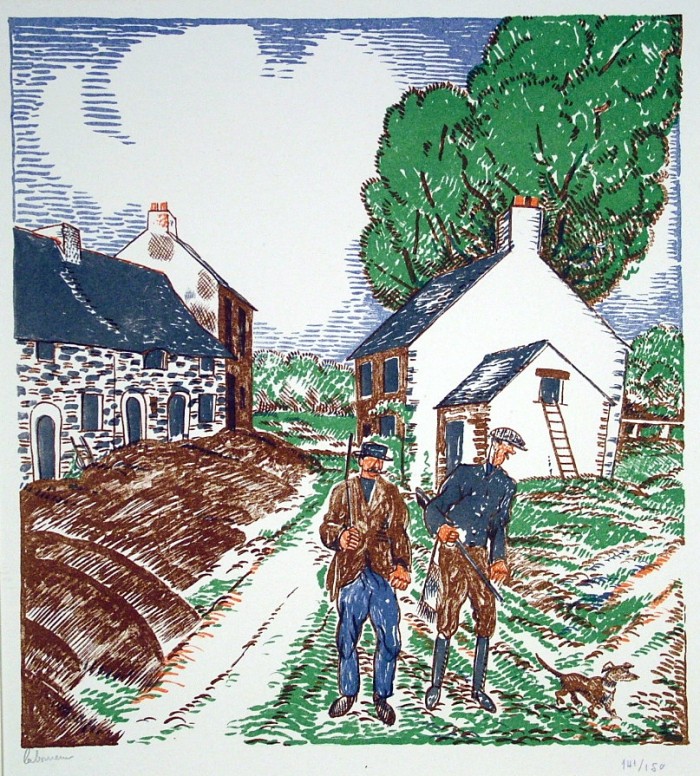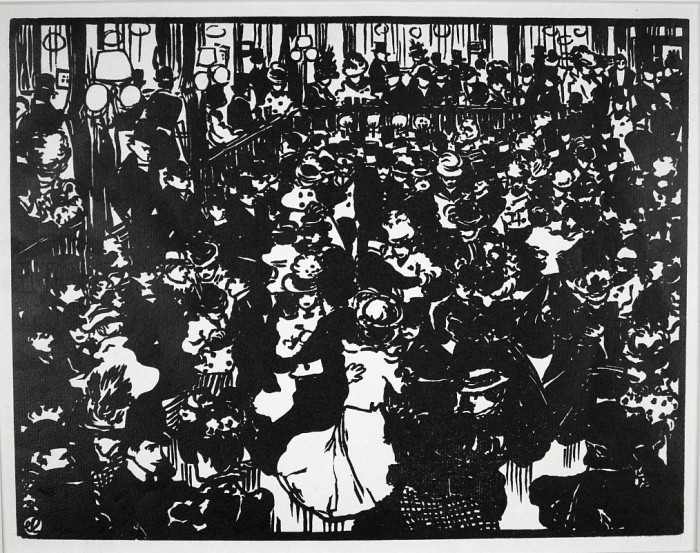Le Petit Metropolitan Life Building, 1909 (only 2 impressions made)
Tuesday, February 24th, 2009Jean-Emile Laboureur, Le Petit Metropolitan Life Building, etching, 1909, signed and dated in pen lower left, numbered in pencil (1/2) lower right. Reference: Sylvain Laboureur 88, only state, one of the two proofs of this print, no edition. In very good condition, on a cream laid Arches paper (with a partial watermark), the full sheet, 6 3/4 x 4, the sheet 12 x 8 1/2 inches.
A fine impression of this great rarity, printed with platetone.
Laboureur made only two impressions of Le Petit Metropolitan Life Building; he later made another stab at this subject, larger size and in reverse (Skyscraper en Construction, New York, L. 93) but abandoned this plate after making only several impressions.
The Metropolitan Life Building tower, at Madison Square Park in New York City, was the tallest building in the world for about 3 years until it was surpassed by the Woolworth Building. The tower was completed in 1909; here Laboureur captures it mid-construction, probably in 1907-8 during one of his visits to New York City (he first visited America in 1903, seeing New York City and a number of other U.S. cities, as well as Toronto and Montreal. He returned to France in 1907 but came back to New York in the fall of 1907, and it was in this period that he created the Metropolitan Life Building drawing in his notebook; he later made a painting of the subject, and also this etching; he returned to London in 1908).
$2750

